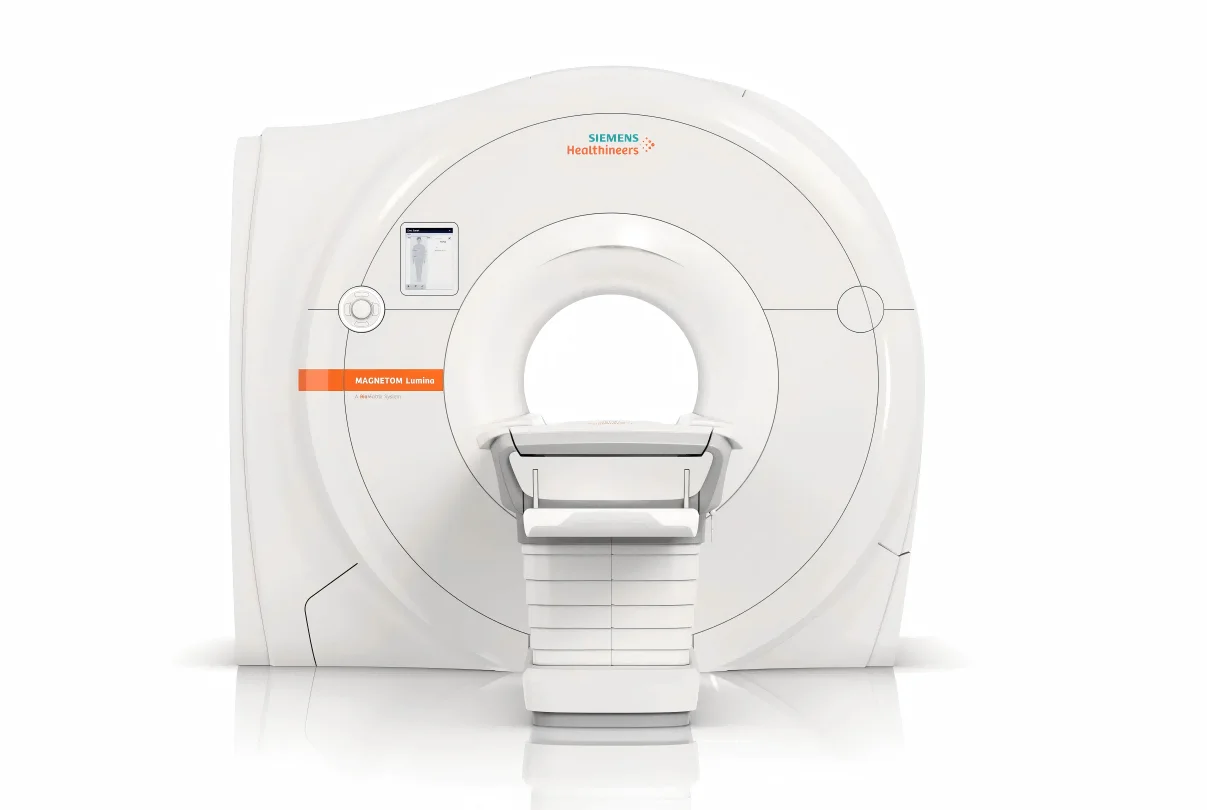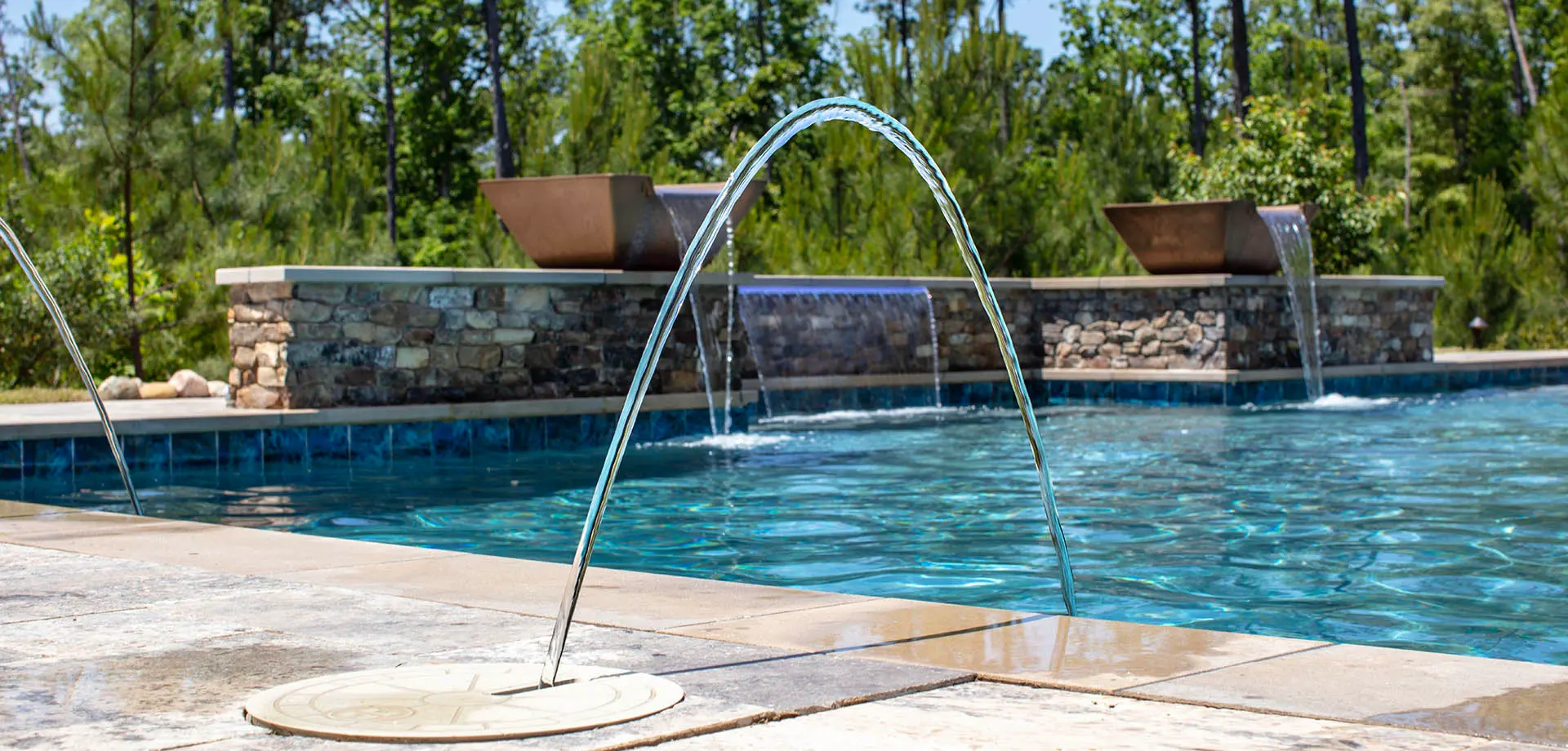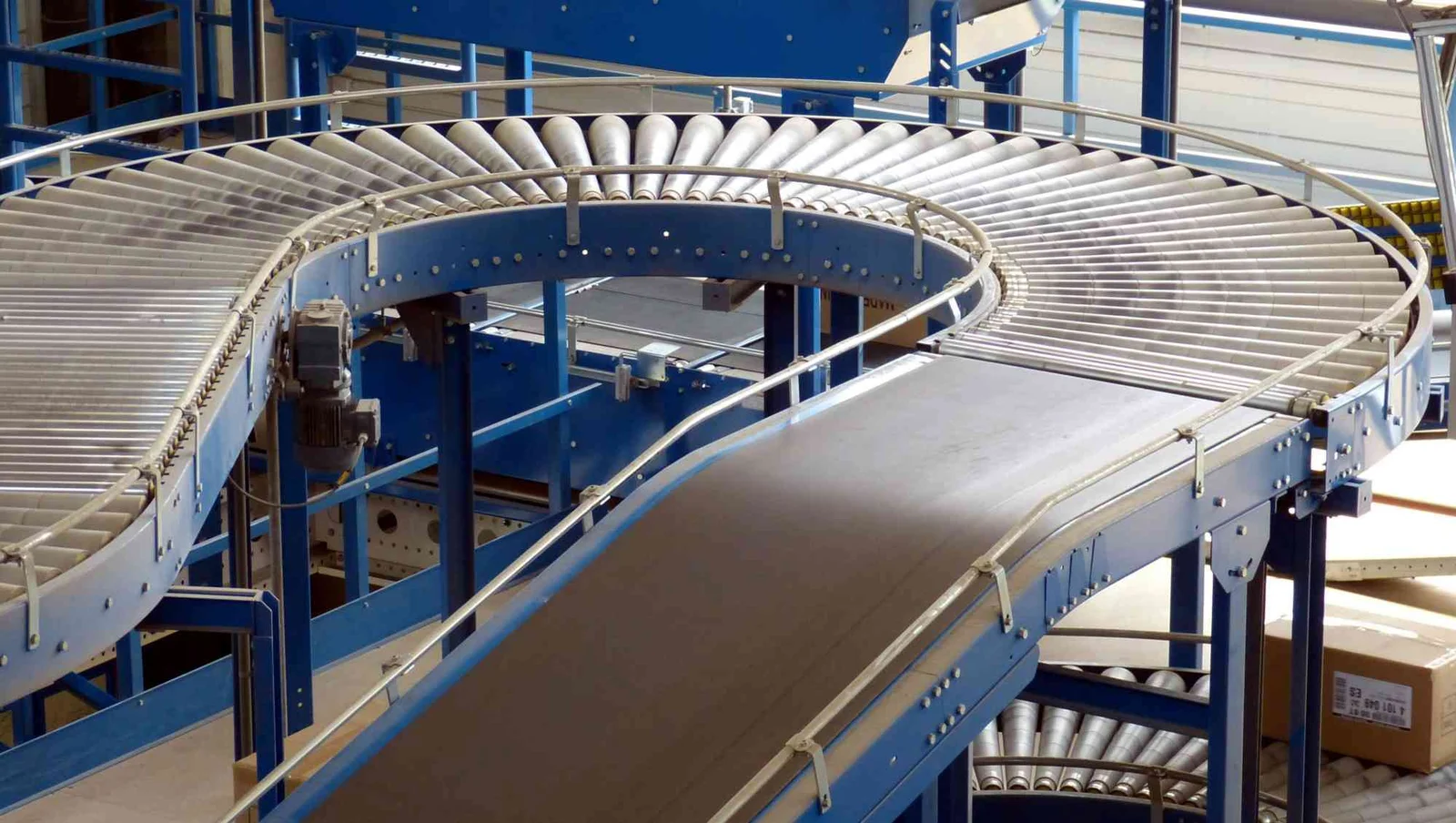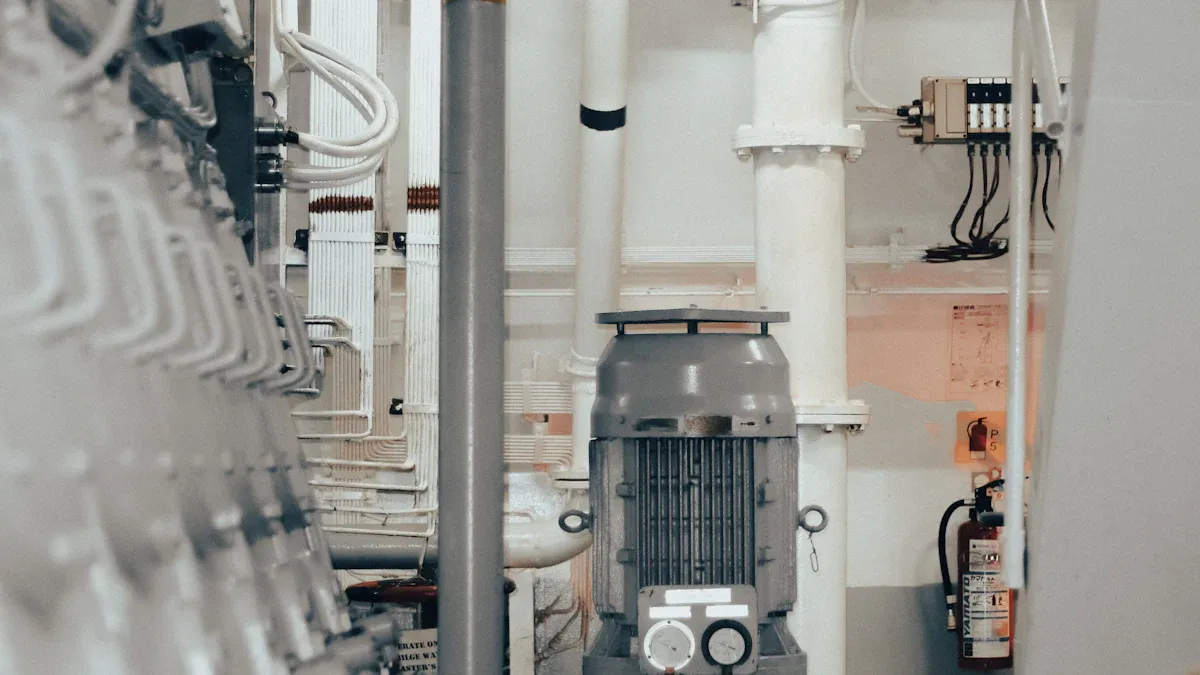
German original equipment manufacturers (OEMs) navigate a demanding market defined by stringent regulatory and consumer expectations. Products must achieve top-tier energy ratings and deliver exceptional acoustic performance. Motor selection is a pivotal engineering decision, directly impacting compliance, performance, and brand reputation. Using the BLDC motor washing machine as a core example, this analysis offers a data-driven comparison of BLDC and AC motors, providing OEMs with the critical knowledge needed to select the optimal technology for highly efficient and quiet applications.
Key Takeaways
German companies need motors that save energy and are quiet. This helps them follow rules and makes customers happy.
BLDC motors save more energy and make less noise than AC motors. They are a better choice for high-efficiency and quiet products.
AC motors are cheaper to buy at first. They are good for simple jobs where saving energy and quietness are not the most important.
BLDC motors cost less over time because they use much less power and last longer. This makes them a smart choice for long-term savings.
Choosing the right motor means looking at what the product needs, how much it costs over time, and what rules it must follow.
Regulatory Compliance & Standards
European Energy Efficiency Directives and Standards
Bridging EU Labeling and IEC Motor Standards,German OEMs aim for the highest A-Rated classification on the European Energy Label for final products (e.g., appliances, HVAC). Achieving this demanding product rating is intrinsically linked to the efficiency of the core component: the motor. The EU’s drive for energy reduction led to EU Regulation 2019/1781 (effective July 1, 2023). This regulation mandates the minimum IEC (IE) efficiency standards for electric motors, ensuring core components support top-tier product performance.
Category | Details |
|---|---|
Efficiency Standard | IEC 60034-30 |
Efficiency Regulations | REGULATION (EU) 2019/1781, Ecodesign Directive 2009/125/EG |
Minimum Efficiency | IE2: 0.12 kW to < 0.75 kW (single phase motors); IE3: 0.75 kW to < 75 kW, > 200 kW to 1000 kW; IE4: >= 75 kW to <= 200 kW |
Motor Energy Consumption Drivers
Many things change how much energy a motor uses. The motor’s design is very important. Older designs often waste energy as heat. How much work the motor does also matters. Motors working at low power can be less efficient. Special controls, like variable speed drives, save energy. Good materials and careful making also help. OEMs must think about these for top-rated products.
The Imperative for Quiet Operation in German Products
German companies want their products to be quiet. Strict rules and customers expect this. The Product Safety Act (ProdSG) says noise must be cut. This should happen where the noise starts. Companies must tell how much noise products make. This information goes in instructions and sales. It includes any small errors. The Outdoor Directive 2000/14/EC also has noise rules. These are for outdoor machines.
German workplaces have noise limits too:
Factories should have less than 80 dB(A).
You must wear ear protection at 85 dB(A).
Offices need less than 55 dB(A).
Quiet tasks need less than 45 dB(A).
Companies must measure sound levels. They must write these levels down. This focus on low noise makes products better. It also makes users happier.
BLDC: Efficiency & Acoustic Performance
Superior Energy Conservation
BLDC motors are inherently designed for superior energy conservation. The brushless architecture eliminates frictional losses and sparking, resulting in substantially higher efficiency across a wide range of operating speeds. Compared to traditional AC induction motors, BLDC technology typically reduces power consumption by 25% to 35% at the same operating speed (depending on load), and demonstrates a relative efficiency gain that can range from 20% to over 60% in common variable speed applications, particularly under partial load conditions.
Low Acoustic Emission
BLDC motors inherently offer low acoustic emissions and minimal vibration. The absence of brushes eliminates the friction and sparking noise associated with traditional designs. Advanced engineering focuses on developing BLDC solutions with near-silent operation and zero vibration.It is called sinusoidal control. It makes less electrical noise. It is better than other controls. A “saddle” method also helps. It changes how voltage is used. This makes less noise too.
FOC and Advanced Control
Smart controls make BLDC motors better. They make them save more energy. They also make them quieter. FOC is one such control… Leading suppliers utilize FOC in their BLDC motors to ensure consistent performance. Advanced control features like “Soft-On/Soft-Off” further enhance acoustic performance for premium applications.
BLDC Configurations (Inner/Outer Rotor)
Diverse motor configurations are available to suit various OEM needs. For instance, Inner Rotor BLDC Motors are highly valued for their energy efficiency, achieving significant energy savings, and extremely quiet operation, often achieving noise levels of 45 dB(A) or less (typical reading at 1 meter, under no-load condition). These motors commonly attain efficiency levels equivalent to or exceeding IE4 standards for AC machines. These motors are characterized by excellent dynamic control and a long rated service life, often exceeding 20,000 hours (Mean Time Between Failures, MTBF), with a wide power range (e.g., from 10W up to 30kW in specialized configurations). Applications span medical technology, smart home devices, and high-speed industrial automation systems.
Conversely, Outer Rotor BLDC Motors offer distinct advantages, such as enhanced torque density and superior thermal management, exhibiting operating temperatures up to 15% lower than comparable AC induction motors under similar load conditions. These configurations typically operate at excellent noise levels of 50 dB(A) or less and have proven reliability over long durations (e.g., a minimum expected lifespan of 15,000+ hours), serving applications predominantly in the 50W to 15kW range.
Application Focus: Washing Machines
Modern washing machines increasingly rely on BLDC motor technology to meet stringent energy and environmental standards. A BLDC Motor Washing Machine provides a superior user experience, characterized by smooth, quiet operation and minimal vibration. This advanced motor technology surpasses older designs in performance and longevity.
Premium BLDC pump solutions for dishwashers and washing machines further contribute to energy savings and acoustic comfort. The quiet operation of a BLDC-driven appliance is a key consumer purchasing factor, reflecting the demand for both energy conservation and a peaceful home environment. These motors are engineered for high reliability and extended operational life.
AC Motors: Robustness & Limitations
AC Motor Principles and Types
Electric motors convert electrical energy into mechanical movement via the interaction of magnetic fields. AC motors operate by generating a rotating magnetic field in the stationary part (stator), which induces a current in the moving part (rotor).
The dominant type is the AC induction motor (Asynchronous Motor), typically utilizing a robust squirrel-cage design. In this design, the rotor consists of conductive bars short-circuited by end rings. The stator houses the windings that, when energized by alternating current, produce the required rotating magnetic field.
Single-phase AC asynchronous motors are commonly available that meet IE2 efficiency and operate at less than 55dB noise. These motors are recognized for their simplicity, reliability across various voltages (220V±15%), and significantly lower initial capital cost, making them suitable for standard residential and light industrial applications.
Other common AC motor variations include:
Pole-changing AC motors: Designed to change operating speeds by switching between different winding configurations.
Single-phase motors: Utilized for simpler tasks that do not demand high starting torque.
Torque motors: Specialized AC motors engineered to sustain high torque even at zero rotational speed without overheating.
New AC Motor Efficiency (IE2/IE3)
New AC motors meet tough efficiency rules.
Electric motors 0.75 kW or more need IE3 efficiency. This started in 2021.
Motors from 0.12 kW to 0.55 kW need at least IE2 efficiency. This rule began in 2021.
The Ecodesign Directive says motors from 0.75 kW to 1,000 kW need at least IE3.
Single-phase motors from 0.12kW to 0.75kW need at least IE2 efficiency. This began in July 2021. High-quality competing AC motors commonly comply with the IE3 class.
Acoustic Challenges & Mitigation
AC motor systems can generate high-pitched noise stemming from magnetic forces (electromagnetic noise) and component vibration (mechanical noise). While inherently quieter than combustion engines, these acoustic emissions can still exceed the stringent targets required for premium German products.
Applicability and Use Case
AC induction motors remain a popular choice due to their reliability and significantly lower initial capital cost. Standard asynchronous motors save money. They are good for German OEMs. They work in many common factory jobs. These jobs include:
Pumps
Fans
Compressors
Conveyors
Tool machines
The MD800 compact AC multidrive is cheap. It is good for European OEMs. It meets needs for many factory machines. AC motors are still a good choice. This is when super high efficiency is not key. This is also true when extreme quietness is not the main goal.
German companies must pick motors carefully. This choice affects how products work. It also affects rules and sales. We compare BLDC and AC motors. Each has good points. Companies must think about these points.
How Much Energy They Save
BLDC motors deliver significantly higher energy savings due to their inherent design. Their brushless architecture and the use of permanent magnets drastically reduce energy losses typically associated with friction and rotor power consumption in AC induction motors. This allows BLDC motors to maintain high efficiency across various operating speeds and loads. For example, leading Permanent Magnet Synchronous Motors (PMSM) solutions are engineered to reach up to 93% efficiency, with high-performance models capable of meeting IE6 efficiency requirements. This performance is crucial for adhering to challenging European regulations. While AC motors are available that meet mandatory IE2 or IE3 rules, BLDC technology generally offers superior energy retention, particularly at partial loads, making them better suited for applications with frequently changing speed demands.
How Much Noise They Make
German products are expected to meet stringent acoustic targets. BLDC motors offer low acoustic emissions and minimal vibration. The brushless design inherently eliminates the friction and sparking noise associated with traditional motors. Further noise reduction is achieved through advanced control techniques, such as sinusoidal control—which minimizes electrical noise—and voltage utilization methods like the “saddle” method. For example, suppliers provide Inner Rotor BLDC solutions engineered for ultra-quiet operation and Outer Rotor models designed for optimal acoustic performance in their power class. While many AC motors operate above 55 dB, BLDC technology offers the definitive pathway for OEMs targeting premium, near-silent products.
Total Cost and First Price
BLDC motors cost more at first. This is because of their controls. But companies should look at the total cost. This is over the product’s life. BLDC motors save a lot of money later.
Category | PMSM/BLDC Motors | AC Induction Motors (ACIM) |
Power Use / Efficiency | Significantly lower. Energy savings can range from 30% to 60% relative to AC motors (depending on load and speed), especially under variable speed or partial load conditions. | Higher. Efficiency is optimal at rated speed and load; drops significantly under variable speed or partial load conditions. |
Rated Service Life | Longer. Rated MTBF (Mean Time Between Failures) is typically 20,000 to 35,000 hours or more, depending on bearing and driver quality. | Relatively shorter. Life is often limited by bearing replacement or brush wear (if applicable), commonly in the range of 10,000 to 20,000 hours. |
Initial Capital Cost | Higher. Primarily driven by the cost of rare-earth permanent magnets and the sophisticated electronic drives required for control. | Lower. Simple design, mature manufacturing processes, no need for permanent magnets or complex electronic control. |
Maintenance & Repair Costs | Lower mechanical maintenance requirement (no brushes). However, repair of the electronic drive can require specialized expertise and higher component costs. | Higher mechanical maintenance requirement (bearings, belts). Motor body repair is usually simpler and lower cost. |
Investment Payback (ROI) | Faster. In continuous or high-energy-demand applications, significant energy savings typically allow recovery of the higher initial cost within 1 to 3 years. | Slower. Payback period is longer due to higher operational energy consumption. |
Total Cost of Ownership (TCO) | Significantly less. Initial investment is quickly offset by energy savings over the product’s lifespan. | Higher. High operational energy expenses (OPEX) accumulate over time, resulting in a higher TCO. |
Over the product’s lifespan (e.g., 10 to 15 years), BLDC motors provide significant Total Cost of Ownership (TCO) savings. They can use 30% to 60% less power than older AC designs, especially at low or variable speeds. This leads to a rapid Return on Investment (ROI), often achieved within 1 to 3 years in continuous operation applications. BLDC motors also have a long rated service life (MTBF), commonly exceeding 20,000 to 35,000 hours. Their reduced mechanical wear results in minimal maintenance and lower long-term repair costs. Furthermore, regulatory bodies and efficiency mandates (such as IE standards) increasingly favor high-efficiency technology, making BLDC the preferred, future-proof choice.
How Hard They Are to Control
BLDC motors need complex controls. This is because they use electronics.
They need special circuits. These time the power. This helps control speed. It also controls power. It makes them work best.
BLDC motors need a smart control system.
This system costs more to make. But electronics are getting cheaper.
AC motors are simpler to control. This is true for basic uses.
AC motors are not often used for exact control. They are used for simple speed control. Like on conveyor belts. This means they need simpler controls.
BLDC motors need experts. They need to know about electronics. They also need software. But this control is very exact. It controls speed, power, and position. This is good for hard jobs. AC motors are simpler for steady speeds. But they are not as flexible.
Motor Adaptability and Longevity
Motors must offer a high degree of adaptability to meet unique OEM specifications, particularly concerning form factor and integration into complex systems. Furthermore, guaranteeing compliance with stringent ingress protection (IP) ratings is essential for product longevity and reliability in harsh operating conditions, which is a non-negotiable requirement for the German market. High IP ratings directly correlate with extended motor lifespan and consistent performance, helping German companies meet long-term compliance and quality standards.
Selection Process & Partnership
What to Think About When Choosing a Motor
German companies must make critical choices about electric motors. Engineers must evaluate service life and overloading capacity to ensure long-term product reliability. The operating environment (ambient conditions, including heat, humidity, dust, or chemicals) is also paramount, directly influencing the required motor protection class (IP rating).
How Motor Controls and Drives Help
Motor controls and drives are instrumental in maximizing the performance of both BLDC and AC motors. For BLDC motors, sophisticated controls like Field-Oriented Control (FOC) precisely manage power and speed, ensuring smooth, quiet, and highly efficient operation—a non-negotiable for premium products. For AC motors, Variable Frequency Drives (VFDs) enhance speed regulation and energy savings.
New regulations, such as the Ecodesign Directive, favor motors that anticipate future energy-saving and carbon reduction mandates.
Honest’s Custom Work and Good Supply Chain
Honest provides bespoke motor modification services for German companies, precisely meeting unique product requirements. We assign a dedicated engineer to guide the client through an 8-step development plan, ensuring accurate specifications and rapid deployment. This specialized approach allows for rapid test model delivery and leverages a comprehensive range of customizable designs, including motors for harsh operating environments.
Quality, Compliance, and Logistics Assurance
Motor longevity is paramount. Honest’s Inner Rotor BLDC Motor and Outer Rotor BLDC Motor are designed to meet stringent ingress protection (IP) requirements, providing robust resistance against dust and water.
Our commitment to quality is demonstrated by our comprehensive certifications:
IATF 16949: The global automotive quality management standard, crucial for guaranteeing the highest level of consistency and control.
ISO 9001: For foundational quality management and customer focus.
Product Compliance: All products adhere to CE, UL, RoHS, and REACH directives.
Honest utilizes strong global logistics partnerships, including DHL Global Forwarding, Kuehne + Nagel, and Panalpina, ensuring safe, trackable, and timely delivery for German OEMs worldwide. Our proven track record with major industry players—such as leading global home appliance manufacturers, Tier-1 power tool brands, and several prominent German OEMs—validates our ability to supply high-performance, energy-efficient motors for the most demanding applications.
Ready to Power Your Next-Gen Washer?
Your premium washing machine line demands more than standard motors. Honest Motor offers the dedicated engineering partnership and technology required to meet the stringent performance metrics of the German market.
Secure Your Competitive Edge with Honest Motor:
Optimal Performance: Engineered for Top-Rated Efficiency (EU Class A), leveraging the industry-leading efficiency of our BLDC solutions.
Proven Reliability: Motors built under IATF 16949 (Automotive Standard), supported by a standard 2-year guarantee and dedicated long-term service.
Favorable Terms & Speed: We commit to a rapid sample delivery schedule (e.g., 15 days for standard modifications) and offer competitive 90-day payment terms for established partners.
Request a Technical Specification Review Today. Let our engineers provide a tailored solution with a committed 12-hour response time for technical inquiries.
FAQ
Why do BLDC motors save more energy than AC motors?
BLDC motors use electronics. They have no brushes. This stops rubbing. It saves energy. They work well at all speeds. Honest BLDC motors are 93% efficient. This meets tough energy rules.
How are BLDC motors quiet?
BLDC motors have no brushes. So, there is no rubbing noise. They do not shake. Special controls make them quiet. Honest BLDC motors are very quiet. They are 45dB or less.
What are the best things about BLDC motors for German companies?
BLDC motors save lots of energy. They are quiet. They help meet rules. They make customers happy. They last a long time. They control things well. They cost less over time.
When might German companies still pick AC motors?
Companies might pick AC motors. This is if they want to save money first. They are good when top efficiency is not needed. They are also good when quietness is not key. AC motors are strong. They are simple to use.
How does Honest help German companies change motors?
Honest gives a special engineer. This engineer helps one-on-one. They have an 8-step plan. They can make test models fast. This means motors fit exact needs. They meet all rules.






